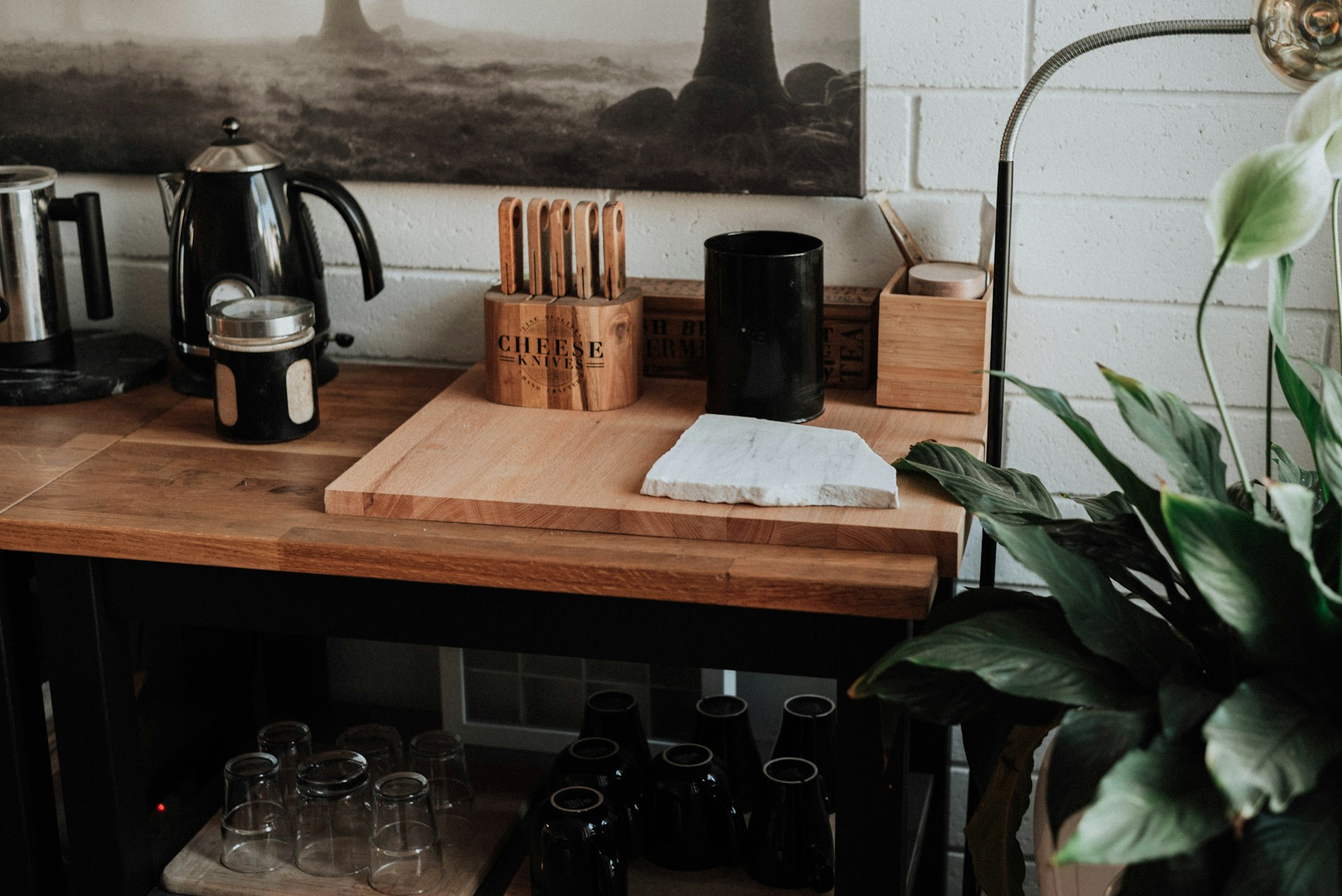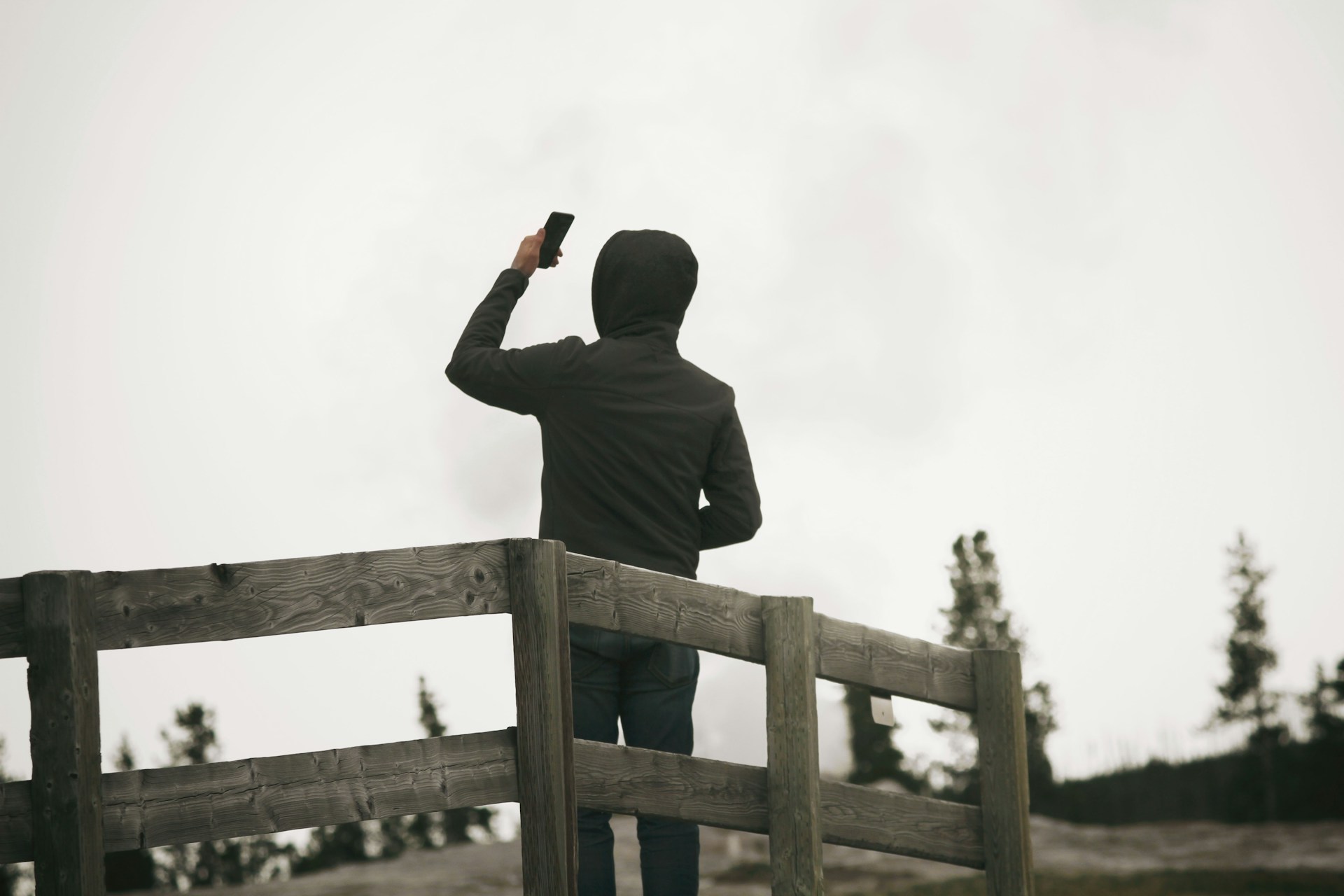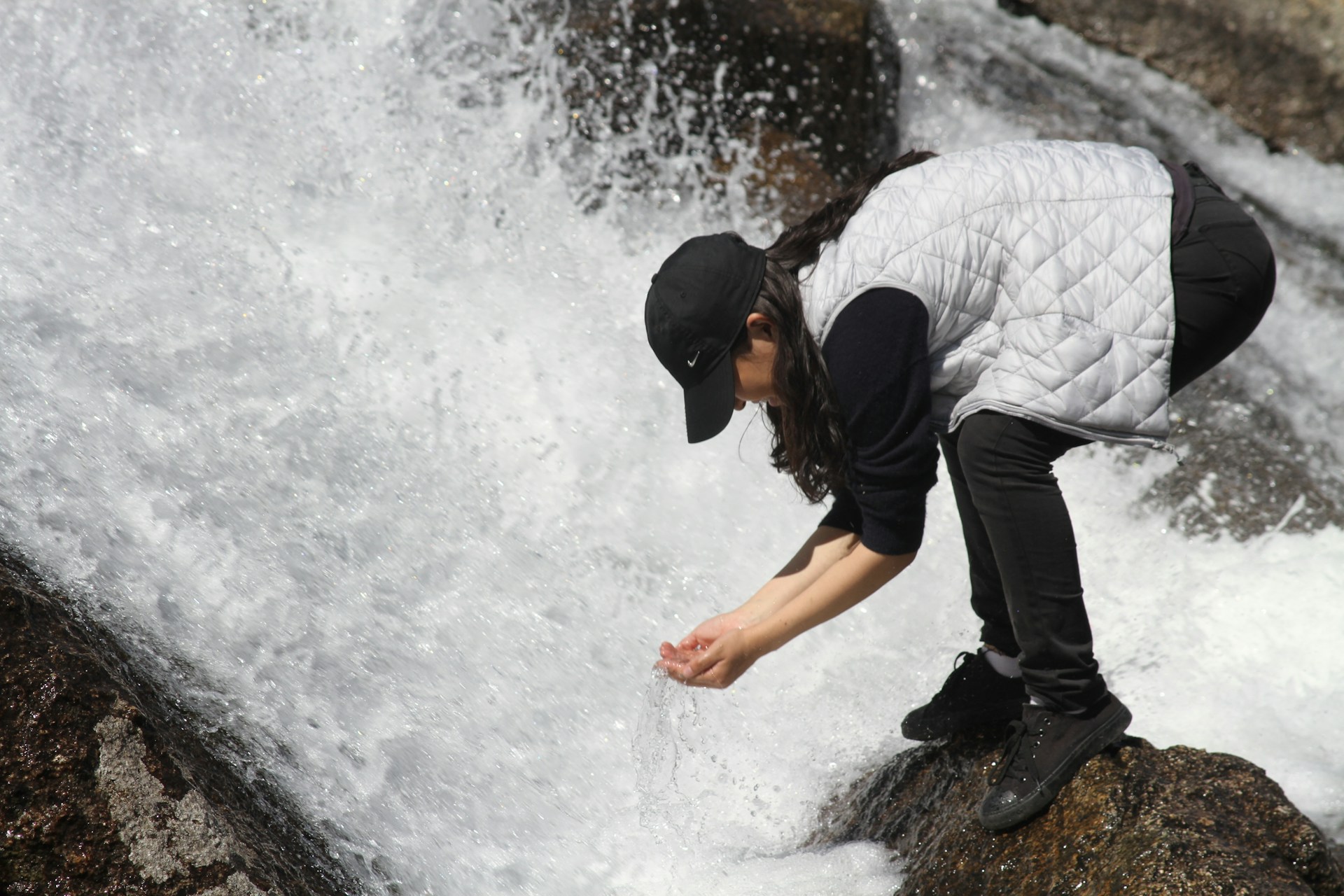Preparedness
Chilling Northern California Crime Shakes Community To Its Core

In a deeply unsettling incident in Northern California, a man is accused of decapitating his one-year-old son during a domestic violence episode. The Sacramento County Sheriff’s Office (SCSO) reported that Andrey Demskiy, 28, was discovered with his son’s severed head in a bedroom at his Antelope home.
Authorities described the scene as “a gruesome discovery.” The tragic event unfolded early Friday morning when SCSO’s North Patrol Deputies responded to a family disturbance call around 4:15 a.m. on the 7500 block of Versailles Way, North Sacramento County.
Upon arrival, deputies encountered Demskiy’s wife and her mother outside the home. The wife alleged that Demskiy had assaulted both her and her mother, who sustained non-life-threatening injuries and was subsequently taken to the hospital by emergency personnel.
Demskiy had barricaded himself inside the residence, refusing to surrender. Deputies were informed that he was inside with his son, whom he might have harmed after allegedly throwing him. Concerned for the child’s safety, the deputies forcibly entered the home, subdued the resistant Demskiy, and made the horrific discovery.
Investigations revealed that after assaulting his wife and her mother, Demskiy decapitated his son with a knife once the women had left to await police assistance.
Sgt. Amar Gandhi, an SCSO spokesperson, expressed the profound impact of the incident on the responding officers.
“The deputies that had to discover that and see that — and again these are human beings that go home every night to families, to their kids — and have to process this. This is something that has shaken them,” Gandhi stated.
A neighbor, also a father of three, shared his reaction with ABC10, describing the alleged murder as “chilling” and remarking, “it’s crazy something like this can happen…just a young father, and that’s just deranged to us.”
Demskiy faces charges of murder, causing corporeal injury to a spouse, and assault with force likely to result in significant bodily harm. He is currently held without bail.
Watch a local news report about the incident below:
Let us know what you think, please share your thoughts in the comments below.

Off The Grid
10 Survival Items Hiding in Your House Right Now

Your kitchen drawer might just be the best survival kit you never built
You don’t need to live in the wilderness or have a fancy bug-out bag to be prepared for an emergency. Most people already own half the tools they’d need to survive they’re just scattered across kitchen drawers, garages, and bathroom cabinets. The secret is knowing what you have and how to use it creatively. Here are ten everyday items that can turn into life-saving tools when things go sideways.
1. Garbage Bags
A simple trash bag can do more than hold waste. Use it as a rain poncho, emergency shelter, ground tarp, or even a water collector. Heavy-duty contractor bags can be stuffed with leaves for insulation or turned into makeshift sleeping bags.
2. Aluminum Foil
Foil is basically metal in your pocket. Wrap it around food to cook over open flame, fashion it into a bowl or wind guard, or use it to reflect heat toward your shelter. You can even fold a small square into a mirror for signaling.
3. Shoelaces
Strong, lightweight, and easy to find. Shoelaces can tie gear, hang food from trees, fix broken zippers, or become makeshift tourniquets. In survival situations, cordage is priceless and you’re probably wearing some right now.
4. Bleach
Unassuming but powerful, regular unscented bleach can disinfect surfaces and purify water. Add just 8 drops per gallon of clear water, mix well, and wait 30 minutes. (If it smells faintly of chlorine afterward, it’s safe to drink.)
5. Coffee Filters
Coffee filters aren’t just for caffeine lovers. They make excellent pre-filters for dirty water, help start fires when dry, and can even work as disposable plates or wound covers. Lightweight and cheap, they’re worth tossing in any emergency bag.
6. Duct Tape
If something’s broken, duct tape can probably fix it. Patch holes, secure splints, seal windows, or twist it into rope. It’s waterproof, durable, and compact a survival MVP in any scenario.
7. Plastic Bottles
Empty water bottles are more useful than they look. Use them to carry and purify water, as makeshift funnels, or to store dry goods. Fill one with water and set it in sunlight for a few hours the UV rays can kill bacteria naturally.
8. Vaseline and Cotton Balls
Together, they’re an instant fire starter. Coat a few cotton balls in petroleum jelly and store them in a small bag. Even in rain, they’ll ignite easily and burn long enough to get a fire going.
9. Paper Clips
A tiny metal multitool. Paper clips can pick locks, fix zippers, clean small gear, or act as hooks and fish lures. They’re proof that even office supplies can have survival value.
10. Hand Sanitizer
Besides keeping your hands germ-free, sanitizer with alcohol doubles as fire fuel. A small squeeze on kindling makes damp wood catch flame faster. Keep a travel bottle in your car or pocket, it’s hygiene and ignition in one.
Final Thought
Survival isn’t about buying gear it’s about using what’s already around you. The next time you open a junk drawer, look again. You might not see a mess; you might see a ready-made emergency kit hiding in plain sight. Being resourceful isn’t just thrifty, it’s one of the best survival skills you’ll ever have.
Preparedness
Your Phone Is Dead. Now What? Staying Connected When Tech Fails

It’s almost hard to imagine life without your phone. It’s your map, flashlight, camera, clock, and your link to everyone you care about. But imagine this: a long power outage, a road trip gone wrong, or a massive storm that knocks out towers and Wi-Fi. Suddenly that tiny glowing screen in your hand turns black and so does your sense of direction.
When your phone dies, it’s not just inconvenient. It can make you feel lost and cut off. But you can still stay connected and in control if you know a few old-school, low-tech tricks.
1. Go Old School: Know How to Use a Map and Compass
GPS has made traditional navigation a lost art, but it’s one of the most valuable survival skills you can learn. Keep a paper map of your local area or the places you travel often printed maps never run out of battery.
Learn to read topography lines, landmarks, and road grids. A basic compass is cheap and reliable. Even without one, you can find direction using the sun (it rises in the east, sets in the west) or at night by locating the North Star. Knowing these simple things can help you walk to safety when your phone can’t guide you.
2. Keep a Backup Way to Communicate
You don’t need a cell signal to reach people. A hand-crank or battery-powered radio can pick up local broadcasts for updates and weather alerts. For person-to-person contact, two-way radios (walkie-talkies) still work great over short distances they’re affordable and don’t rely on towers.
In group situations, establish meeting points ahead of time. If you’re separated, everyone should know where to regroup. Simple, clear planning beats panic every time.
3. Create a “No-Tech Contact Tree”
If your phone dies, do you actually know anyone’s phone number by heart? Most of us don’t anymore. Write down key contacts family, friends, doctors, and emergency numbers on a small card and keep it in your wallet or car.
Create a quick “contact tree” on paper: who to call, who they’ll contact next, and where to meet if lines are down. It doesn’t need to be fancy; even a handwritten plan keeps communication flowing when technology doesn’t.
4. Use Signals and Landmarks
If you can’t talk or text, visibility becomes your language. Bright colors, mirrors, or flashlights can signal for help during the day or night. Three short flashes of light, three blasts on a whistle, or three knocks on a wall, all are standard distress signals.
Learn to identify major landmarks like rivers, bridges, or towers. They help rescuers find you and guide you to safety.
5. Power Smart When You Can
If you get a chance to recharge, make it count. Keep a small power bank charged and ready in your bag or car. Switch your phone to airplane mode, lower brightness, and close background apps to stretch every percent of battery life.
Final Thought
Technology is amazing until it isn’t. Losing your phone doesn’t have to mean losing your sense of connection or safety. Real independence comes from knowing what to do when the tools fail. Think of it as digital detox with a survival twist: when the world goes quiet, the smartest thing you can do is stay calm, use your head, and rely on skills that don’t need a signal to work.
Off The Grid
What To Do When There’s No Water (And Everyone’s Panicking)

The Water Survival Guide: Finding, Filtering, and Storing the One Thing You Can’t Live Without
You can go weeks without food. Maybe months without sunlight. But go three days without water, and your body starts to shut down. In a real survival situation whether it’s a natural disaster, a grid failure, or getting lost outdoors clean water isn’t optional. It’s the first and most important thing you need to secure.
This guide breaks it down into something simple and doable: how to find, filter, and store safe drinking water anywhere.
1. Finding Water When There’s None in Sight
When the taps stop running, it’s time to think like nature. Start by looking downhill. Water always follows gravity. Watch for damp soil, thick green vegetation, or insect activity these are signs there’s water nearby.
If you’re outdoors, collect rainwater anytime you can. Lay out plastic sheets, ponchos, or even trash bags to funnel it into containers. In the morning, you can also gather condensation by wrapping a T-shirt or towel around grass or branches and wringing out the moisture.
In urban settings, drainpipes, water heaters, and toilet tanks (not the bowl) can provide clean, stored water in an emergency.
2. Filtering and Purifying
Finding water is only half the job making it safe is what keeps you alive. Clear-looking water can still contain bacteria, chemicals, or parasites. The rule of thumb: If you didn’t see it come out of a sealed bottle, purify it.
Here are the main ways:
- Boiling: The oldest and most effective method. Bring water to a rolling boil for at least one minute (three if you’re at high altitude).
- Bleach: Add 8 drops of regular, unscented bleach per gallon of water. Wait 30 minutes before drinking.
- Filters: Portable straw filters, gravity filters, or ceramic pumps remove most contaminants. Always follow up with chemical treatment if possible.
- Improvised options: Pour water through layers of cloth, sand, or charcoal to remove sediment before purification.
3. Storing Water for the Long Haul
Once you’ve got clean water, store it like it’s liquid gold. Use food-grade plastic containers, glass jugs, or heavy-duty bottles with tight seals. Keep them in a cool, dark place away from chemicals and direct sunlight.
A good goal is one gallon per person per day half for drinking, half for cooking and hygiene. Rotate your supply every six months to keep it fresh.
The “Clean Water Anywhere” Method
If you forget everything else, remember this three-step formula:
Find it. Clean it. Protect it.
Locate a source, purify it before you drink, and store it safely for when things get worse.
Final Thought
Water is the ultimate equalizer. It doesn’t care how strong, rich, or prepared you are without it, nothing else matters. Learn how to find and protect it now, before you ever have to. Because when the world runs dry, those who know how to stay hydrated will be the ones who stay alive.
-

 Tactical2 years ago
Tactical2 years ago70-Year-Old Fends Off Intruder with Lead-Powered Message
-

 Tactical2 years ago
Tactical2 years agoVape Shop Employee Confronts Armed Crooks, Sends Them Running
-

 Preparedness1 year ago
Preparedness1 year agoEx-Ballerina’s Guilty Verdict Sends Tremors Through Gun-Owner Community
-

 Off The Grid1 week ago
Off The Grid1 week ago10 Foods That Could Save Your Life When Grocery Shelves Are Empty
-

 Preparedness1 year ago
Preparedness1 year agoGood Samaritan Saves Trooper in Harrowing Interstate Confrontation
-

 Tactical2 years ago
Tactical2 years agoMidnight SUV Theft Interrupted by Armed Homeowner’s Retaliation
-

 Survival Stories2 years ago
Survival Stories2 years agoEmily’s 30-Day Experience of Being Stranded on a Desert Island
-

 Preparedness1 year ago
Preparedness1 year agoArizona Engineer’s Headless Body Found in Desert: Friend Charged
Robert Keyser
January 11, 2025 at 12:18 pm
He should be hung in public with extra weight added to him so he’s decapitaded
John R. Pyles III
January 11, 2025 at 12:35 pm
His death should mirror that of his child
Jay m Hatin
January 11, 2025 at 12:48 pm
Personal safety is highly restricted because it does not allow protection of home and health. Criminals have more laws breaking into a persons house than the owners.
People should be able to protect Not only their family but their property as well. That means deadly force for each. You should not have to wait to be injured by criminals before you can act WITHIN YOUR OWN HOME.
Concealed Carry Permits should be allowed US wide when you travel for your own protection.
Carlos
January 11, 2025 at 2:28 pm
Well Mr. Demskiy has now become an “unwanted celebrity” for ANY prison in Calif. that he winds up in. Murdering his own child in such a gruesome & horrific way will only show the prison inmates that he is EVIL on the inside and they will most likely give him some form of “prison like surgery” from some very highly skilled and well trained “prison INMATE SURGEONS” who will most likely wanna SURGICALLY open him up to see if they can remove that EVIL INSIDE OF HIM. HE PROBABLY WON’T LIVE LONG…….WE WON’T CRY!
Dan Teggin
January 11, 2025 at 3:40 pm
Put him in general population and make sure the other prisoners know what his crime is. Problem solved.
Jack W Peck
January 11, 2025 at 4:39 pm
I cannot think of anything worse. Just reading about it fills me with such anger…I wish I had not read the article. I would immediately dig a deep hole and bury this person from the neck down and have him stoned to death…with small rocks. I would gladly cast the first and last stone.
CPO Bill
January 12, 2025 at 1:10 pm
He should be drawn and quartered or burned at the stake!